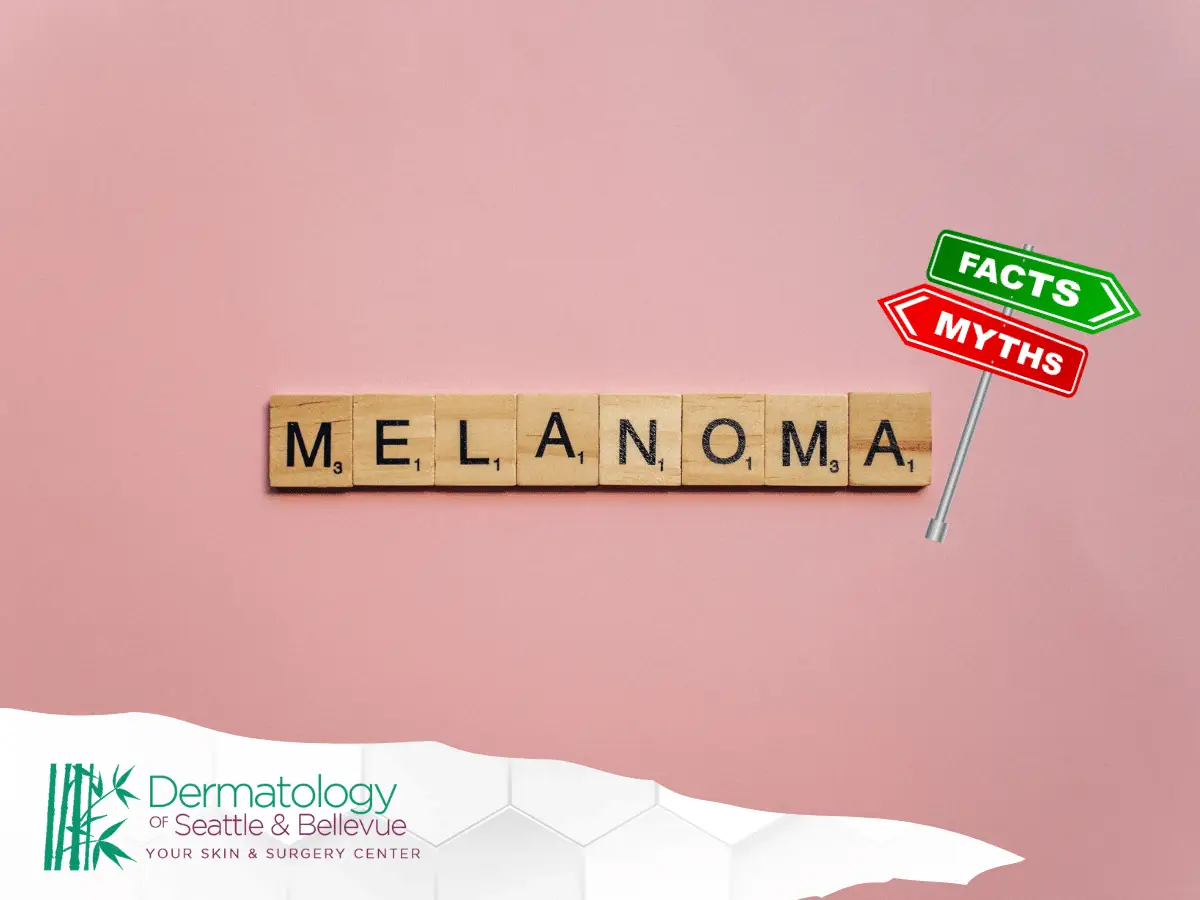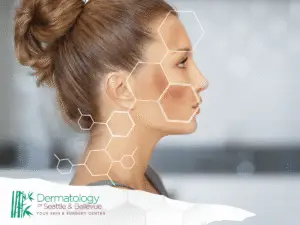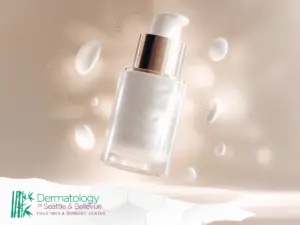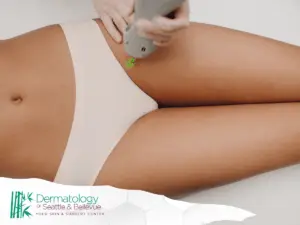Seattle’s famously cloudy skies and cooler season may give residents a false sense of security when it comes to sun safety. Yet melanoma remains one of the most serious forms of skin cancer, and myths surrounding its causes and prevention put people at risk. By addressing skin cancer myths directly, Seattleites can take practical steps to protect their skin year-round and lower their melanoma risk.
Quick Summary
- Seattle’s cloudy weather doesn’t eliminate UV exposure; up to 80% of UV rays can penetrate clouds, increasing year-round skin damage risk.
- A “base tan” is a sign of UV damage and offers minimal protection (about SPF 3 or less); relying on tanning increases melanoma and other skin cancer risks.
- Melanoma can affect all skin types; people with darker skin are not immune and may be diagnosed later, so consistent prevention and awareness matter for everyone.
- Tanning beds are carcinogenic, and indoor tanning before age 35 raises melanoma risk by nearly 60%; avoiding tanning beds and intentional tanning is emphasized.
- The post outlines early warning signs using the ABCDE method and recommends daily broad-spectrum SPF 30+, protective clothing, shade during peak hours, and regular dermatologist skin checks for new or changing spots.
Why Understanding Skin Cancer Myths Matters in Seattle
Skin cancer is the most common cancer in the United States, and Washington state is no exception. Despite frequent rain and long stretches of gray weather, UV rays penetrate clouds and reach your skin, contributing to sun damage and increasing your lifetime cancer risk. Misconceptions about tanning, sunscreen, and who is truly at risk of melanoma keep too many people from practicing consistent skin cancer prevention. In a city where outdoor activities—from kayaking to hiking—are part of daily life, knowing the truth about melanoma is essential. Understanding the differences between sun spots and melanoma differences is crucial for effective skin cancer prevention. Regular skin checks and awareness of changes in your skin can help detect early signs of melanoma, increasing the chances for successful treatment. Additionally, using a broad-spectrum sunscreen daily, regardless of the weather, is a simple yet effective way to protect your skin all year round.
Myth: A Base Tan Protects You From Melanoma
One of the most persistent skin cancer myths is that building a base tan shields you from damaging rays. In reality, any tan is evidence of skin damage caused by ultraviolet light. Melanocytes, the pigment-producing cells in your skin, respond to UV exposure by creating melanin, which darkens the skin. This process doesn’t protect you from melanoma; it’s simply a sign that your body is already sustaining harm.
- A base tan provides the equivalent of SPF 3 or less—nowhere near enough protection.
- UV exposure from tanning increases the risk of melanoma, basal cell carcinoma, and squamous cell carcinoma.
- Relying on a tan rather than sunscreen leads to cumulative skin damage and accelerates signs of aging.
Myth: Cloudy Days Mean no UV Risk
Seattleites often assume that gray skies equal protection, but this is one of the most dangerous myths. Up to 80% of ultraviolet radiation penetrates cloud cover, which means your skin is still exposed to damaging rays. This misconception fuels preventable sunburn and long-term UV damage, particularly in summer when people spend more time outdoors without sunscreen.
Myth: Only People With Fair Skin Get Melanoma
While individuals with fair skin and light hair have a higher melanoma risk, people with darker skin are not immune. Melanoma can develop on any skin type and is sometimes diagnosed later in people of color, which may worsen outcomes. Everyone should be aware of how their skin reacts to UV exposure and stay consistent with prevention practices.
The Real Danger of Tanning Beds and Indoor Tanning
Tanning beds remain a leading culprit in skin cancer diagnoses, especially among younger people. Indoor tanning exposes your skin to concentrated ultraviolet light that accelerates sun damage and increases the risk of melanoma.
- The World Health Organization classifies tanning beds as carcinogenic, in the same category as tobacco.
- Using tanning beds before age 35 increases melanoma risk by nearly 60%.
- Indoor tanning also raises the likelihood of basal cell carcinoma and squamous cell carcinoma.
How Ultraviolet Rays and Melanocytes Drive Melanoma Risk
Melanoma develops when melanocytes, the cells responsible for pigment, sustain DNA damage from ultraviolet rays. Over time, repeated UV exposure—whether from the sun or tanning beds—causes mutations that allow these cells to grow uncontrollably. Unlike other types of cancer, melanoma spreads aggressively if not detected early, which makes prevention and regular skin checks critical for long-term skin health.
Common Signs to Watch for: Moles, Spots, and Changing Skin
Early detection of melanoma saves lives, but many skin cancer myths downplay the importance of self-examination. Watch for warning signs using the ABCDE method:
- A – Asymmetry: One half of the mole looks different from the other.
- B – Border: Uneven, scalloped, or poorly defined edges.
- C – Color: Multiple shades of brown, black, red, or even white.
- D – Diameter: Larger than a pencil eraser.
- E – Evolving: Any change in size, shape, or symptoms like bleeding or itching.
Don’t dismiss new or unusual spots on your face, arms, legs, or other areas of skin—especially if they appear suddenly or change quickly.
Skin Cancer Prevention: Sunscreen, Clothing, and Behavior
Prevention is the strongest tool against melanoma. Simple steps help reduce exposure to damaging rays and lower the risk of skin cancer deaths:
- Apply a broad-spectrum sunscreen with a sun protection factor (SPF) of 30 or higher daily—even on cloudy days.
- Wear protective clothing, wide-brimmed hats, and UV-blocking sunglasses during outdoor activities.
- Seek shade between 10 AM and 4 PM, when UV rays are strongest.
- Avoid tanning beds and intentional tanning altogether.
- Schedule regular skin examinations with a dermatologist for early detection.
Screening, Skin Checks, and When to Make an Appointment With a Dermatologist
Routine screening is essential for catching melanoma and other forms of skin cancer early. A dermatologist can perform a thorough skin examination to identify suspicious moles or lesions. Seattle residents should consider scheduling an appointment if:
- You notice new or changing spots that don’t heal.
- A mole itches, bleeds, or evolves in appearance.
- You have a family history of melanoma or frequent sunburns.
- You’ve used tanning beds or have high UV exposure.
Regular skin checks offer peace of mind and can significantly reduce the risk of advanced cancer diagnoses.
Treatment, Resources, and Recent Advances (Clinical Trials, Immunotherapy)
If you receive a skin cancer diagnosis, know that treatments are advancing rapidly. Options include surgery for localized cases, as well as therapies such as immunotherapy and targeted treatments for more advanced melanoma. The Providence Swedish Cancer Institute and other Seattle-based centers offer access to medical oncologists, clinical trials, and comprehensive cancer care. Reliable resources like the National Cancer Institute and the American Academy of Dermatology also provide up-to-date news and support for patients navigating a cancer battle.
Conclusion: Clear Facts and Practical Next Steps
Melanoma myths: what every Seattleite needs to know is more than a headline—it’s a reminder that skin cancer prevention starts with accurate knowledge. By avoiding tanning beds, wearing sunscreen, and watching your skin closely for changes, you protect yourself from one of the most dangerous forms of skin cancer. Staying informed, scheduling regular dermatologist appointments, and using trusted resources are powerful ways of skin health that reduce cancer risk and safeguard your future. It’s also crucial to be aware of less common types of melanoma, such as amelanotic melanoma, which can easily go unnoticed due to its lack of pigmentation. Understanding amelanotic melanoma characteristics, such as the appearance of nodules or uneven skin texture, can lead to earlier detection and treatment. Educating yourself and others about these nuances can significantly enhance your skin health strategy. Additionally, understanding various skin conditions beyond melanoma can also aid in better skin health management. For instance, familiarizing yourself with blood blister characteristics and causes can help you distinguish between minor injuries and more serious issues. This comprehensive knowledge empowers you to take prompt action and seek medical advice when necessary, further contributing to your overall skin wellness.
Disclaimer: Educational Purposes Only
This content is for informational purposes only and should not replace professional medical advice. Always consult a licensed dermatologist or health care provider for personalized guidance, treatment, or prevention strategies tailored to your unique skin type and health history.





